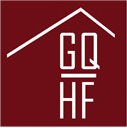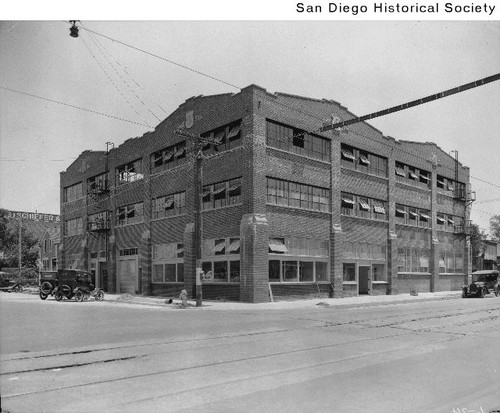Landmarks
Sweets for the Sweet
8th and K Street (1924)
Petco Park (Now)
Architect: Walter Trepte
Architectural Style: Early 20th Century Commercial
It’s February, and Valentine’s Day is coming right up. What better (and more traditional) way to show your sweetie that you love her than by gifting her with sweets. From 1905 until 1951, there was no question as to where many aspiring San Diego suitors would go – the Showley Brothers Candy Factory. If one couldn’t afford a fancy confectionary collection, there was always the iconic and affordable “5-Cent Cluster Ruff,” a peanut and chocolate bar, a perennial favorite.
Showley brothers, B. Guy and J. Ray, founded the company in 1905 with only $1,535. As neither brother had any experience in the art of making candy, they employed veteran candy maker, George Stover.
Their first location was at Second and F streets, a structure with a 25 foot frontage. The staff consisted of one candy maker and three girls. They made jelly beans, taffy and their signature “Cluster Ruff.” There were few stores and no deliveries. Three years later the frontage had increased to 100 feet, as the company moved to Turner Hall, where all floors and the basement were utilized. Turner Hall, at 8th and G, was originally built by German-Americans as a meeting place and gymnasium. Due to a downturn in economic conditions, the institution lost both their hall and most of their membership. When Showley Brothers moved in, they had grown to 25 employees. By 1915, the Showley brothers were selling their wares at the Panama – California Exposition and at Coronado’s Tent City. In October 1935, at the California Pacific International Exposition, the Showleys sponsored ”Candy Day,” complete with Paramount Pictures child star, “Baby LeRoy,” who served as the day’s “candy kid.”
Unfortunately, on January 8,1924 , a spectacular fire left the candy factory in smoking ruins. But the brothers were not to be deterred. In exactly six months, they re-built, and opened the largest exclusive candy factory in the West. A private opening was held on July 14, which was the 19th anniversary of the founding of the Showley Brothers Candy Factory.
The new plant, designed by Walter Trepte, was one of the most modern in the state, and featured 20,000 square feet of floor space over three well-lighted floors. The company logo – a bear sucking on a candy stick – was displayed on medallions along the parapet of the building. The manufacturing capacity was 15 tons of candy daily. This candy palace came at a cost of one quarter of a million dollars. It then employed 100 workers, which would soon grow to 150. The public was cordially and regularly invited to go through this wondrous factory. This iconic brick building produced candy until 1951.
In 1931, there was another smaller fire, which caused $25,000 damage. It was in the hard candy department , and was mopped up fairly quickly, with full production resuming in less than ten days.
In 1951, Guy R. Showley, son of B. Guy Showley, liquidated the company, and in 1960, he sold the building. It served as a clothing warehouse until 1982, when developer Lin Martin converted it to live-work loft housing. In 1999, Centre City Development Corp, formerly the city’s redevelopment agency, purchased the building under eminent domain for $3.5 million. It was then deeded to then-Padres owner, John Moores’ real estate group as part of the Petco Park development project.
In 2003, this historic building was moved approximately 280 feet to the east to make room for a “park in the park” at the downtown ballpark. It is one of three historic structures incorporated into the ballpark design. Moving the candy factory was a most ambitious project, as it weighed 3 million pounds. It was moved on wheels requiring 72 hydraulic dollies and a very intricate system of cables. It was said that this was the heaviest building ever moved in the United States! The entire operation took six and a half hours over two days. The Padres ownership group paid $3 million to move the building and agreed to preserve it. The total project cost from acquisition to the relocation to restoration cost approximately $13 million.
The building is now occupied by another historic company – Bumble Bee Seafoods, Inc. In 1899, when it was formed, the company was called the Colombia River Packers Association , and was located in Astoria, Oregon. It adopted the Bumble Bee brand in 1910, and eventually migrated to San Diego. The company’s corporate headquarters is now located in the Showley building.
The Showley Candy Factory is a classic example of how a building designed for one purpose has been adapted for modern uses in a new century. A mix of the old and the new provides not only historical continuity, but serves as a tribute to San Diego’s early business pioneers.
Sandee is the historian and lead tour guide at the Gaslamp Quarter Historical Foundation. She can be reached at [email protected].

